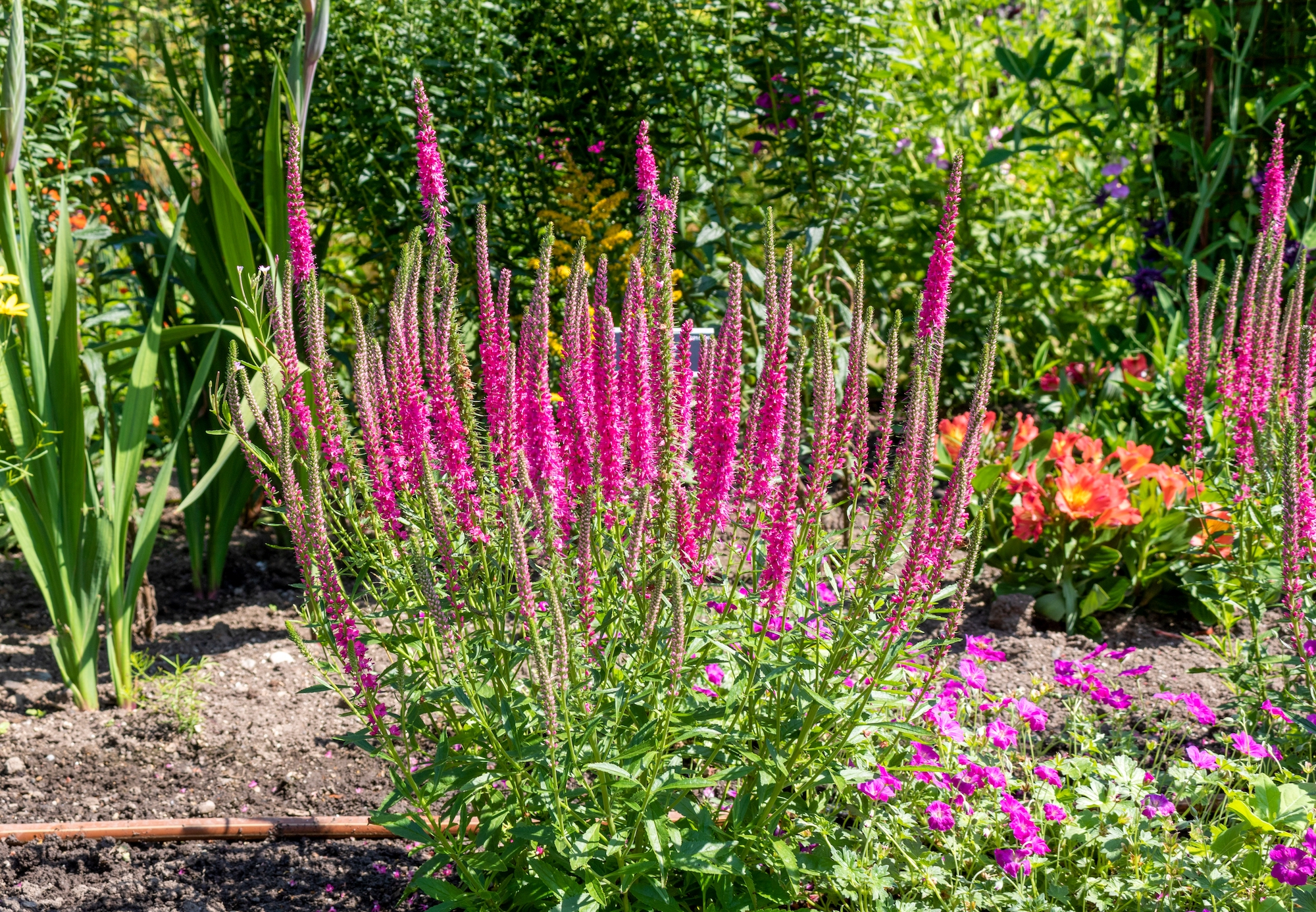
Planting, Growing, and Caring for Veronicas
The Almanac Garden Planner - Use It Free for 7 Days!
Plan your 2025 garden with our award-winning Garden Planner.
Types
- ‘Crater Lake Blue’ (V. austriaca) is a mat-forming perennial that grows 12 to 18 inches tall with beautiful, deep, gentian blue flowers in early summer. Hardy in USDA zones 4-8. Great for mass plantings.
- ‘Sunny Border Blue’ (V. spicata) is a clump-forming perennial with erect spikes of tubular, dark violet-blue flowers that reach 18-24 inches. This hybrid blooms from early summer to frost and makes excellent cut flowers.
- ‘Red Fox’ (V. spicata) has deep pink flowers on a narrow spike similar to ‘Sunny Border Blue’ but is a bit shorter, at about 12-16 inches. Hardy to USDA zones 3-8 for the northern gardener!

‘Dick’s Wine’ (V. prostrata) is a ground cover that grows to about 4-8 inches tall and produces an abundance of rose-wine–colored blooms—so many that they actually hide the dark-green foliage. Easily divided as they grow for quicker coverage. Drought tolerant once established and deer resistant.

ADVERTISEMENT
My ground cover Veronica’s seem to flop to the outside so there aren’t any blooms or leaves in the middle. Any suggestions appreciated!
Your problem is not an uncommon one, but it may take a bit of experimentation to determine an exact cause. The most likely culprit is that your soil is too rich, causing the blooms to grow faster and larger than the stalks can support. The Wisconsin extension service and Pennsylvania horticulturist George Weigel offer some helpful hints at the links below.
https://hort.extension.wisc.edu/articles/ground-cover-veronicas/
https://www.pennlive.com/gardening/2010/04/floppy_veronica.html
Will Speedwell grow well in 9a?
I'm in a zone 7b, when should i expect my veronica to emerge from it's winter dormancy?
It depends on the weather this year, but we usually see it emerge in early April in northern Texas (which is 7b). Be careful not to overwater Veronica or water from the top to avoid fungus. Use a soaker hose. It likes full Sun and well-draining soil.
How do I divide my Veronica?
Just like a hosta….cut with a sawzell or shovel right down the center. Plant In good soil deep enough to have the roots covered and even with the plants bottom growth.
I bought one dead looking one on sale in the clearance at Lowe’s garden center. Looked pretty patenting, but for 5 bucks, I gave it a shot. One plant….sawed in into 4, and cut the bottom roots off as it was severely root bound. Put it in a bucket of water for an hour or so….planted in my garden. Now have 4, soon to be 8 gorgeous plants.
Bought what was told a veronica but it didn't have flower spires. Does have purple flowers but they form off a 7-8" side sprout. Mine is about a 5 ' plant. Spent blooms turn into fuzzy little blooms!
Please help.... my husband bought this one for me and it was so purple and healthy 2weeks ago! I transplanted it to a little bigger pot it was good for a week, now the tops are fading, the leaves keep wilting like it's dry, but I check it twice a day. I have quite a few plants on my patio, I am totally learning as I go! So I'm wanting to make it pretty again... should I trim it? As I have read some people do. How... topping it? Trimming the deads...? Thank you!
As birds & butterflies sip/drain the nectar, the spikes appear more pale. Trim and new bright spikes will follow…












